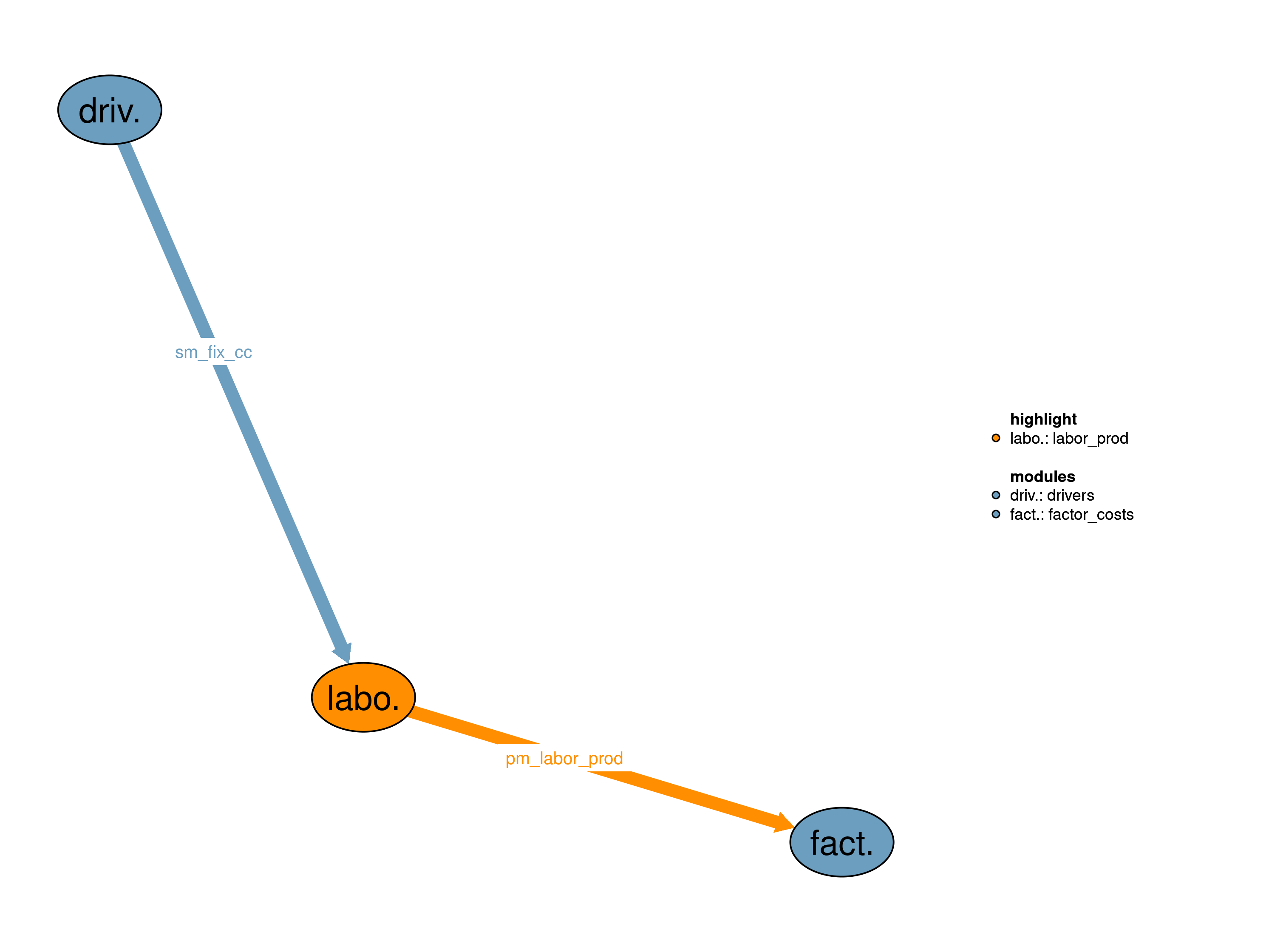This module provides a labor productivity factor, which reflects the efficiency of labor under changing environmental conditions (1 = no change).

| Description | Unit | A | B | |
|---|---|---|---|---|
| sm_fix_cc | year until which all parameters affected by cc are fixed to historical values | \(year\) | x |
| Description | Unit | |
|---|---|---|
| pm_labor_prod (t, j) |
labor productivity factor | \(1\) |
This realization accounts for climate change impacts on labor productivity, based on ESM experiments from the LAMACLIMA project https://climateanalytics.org/projects/lamaclima/. Heat‐induced impacts on labor productivity have been calculated using the methodology described in Orlov et al. (2021). Heat-induced impacts on labor productivity are available for two different metrics (HOTHAPS and ISO) and work intensity levels (300W and 400W). The Hothaps function describes the relationship between workability and the wet bulb globe temperature (WBGT). WBGT is a heat index that measures heat stress impacts of temperature, humidity, wind speed, and solar radiation. The ISO standards describe the frequency and duration of rest breaks at work under different levels of heat stress. Work intensity: 300W and 400W stand for the level of work intensity measured in Watts (W), at which the impacts are estimated. The higher work intensity, the stronger is the heat exposure. For instance, the impacts of heatstress on labor productivity under 300W are less than under 400W. In previous studies, the level of work intensity in agriculture is assumed to be 400W. However, work intensity differs by region due to different levels of mechanization. While 400W is plausible for manual work, mechanized work is less labor intensity.
Limitations Climate change impacts on labor productivity are currently only available for RCP1.9 and RCP8.5.
In this realization labor productivity is fixed to a value of 1, which implies no change over time.
Limitations The impacts of changing environmental conditions on labor productivity are not accounted for.
| Description | Unit | A | B | |
|---|---|---|---|---|
| f37_labor_prod (t_all, j, rcp37, metric37, intensity37, uncertainty37) |
labor productivity factor | \(1\) | x |
| description | |
|---|---|
| intensity37 | work intensity level |
| j | number of LPJ cells |
| metric37 | labor productivity impact metric |
| rcp37 | climate change impact sceanrios |
| t_all(t_ext) | 5-year time periods |
| t(t_all) | Simulated time periods |
| uncertainty37 | ESM uncertainty |
Florian Humpenöder, Michael Windisch
09_drivers, 37_labor_prod, 38_factor_costs
Orlov, Anton, Anne Sophie Daloz, Jana Sillmann, Wim Thiery, Clara Douzal, Quentin Lejeune, and Carl Schleussner. 2021. “Global Economic Responses to Heat Stress Impacts on Worker Productivity in Crop Production.” Economics of Disasters and Climate Change, August. https://doi.org/10.1007/s41885-021-00091-6.